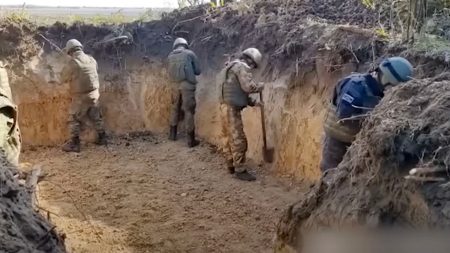The delicate ceasefire agreement painstakingly brokered between Israel and Hamas hangs precariously, threatened by a critical sticking point: the release of hostages. Israeli Prime Minister Benjamin Netanyahu has declared that the truce, slated to commence Sunday morning, will not proceed unless Hamas provides the agreed-upon list of 33 hostages to be freed. This demand underscores Israel’s unwavering stance that adherence to the terms of the agreement is paramount and that Hamas bears sole responsibility for any breaches. The stalled release has injected uncertainty into the fragile peace process, leaving the world anxiously watching as the deadline approaches.
The proposed ceasefire, the result of over a year of intensive behind-the-scenes negotiations by the United States, Qatar, and Egypt, aims to address both the immediate hostage crisis and the broader humanitarian catastrophe in Gaza. The agreement, confirmed by Qatari Prime Minister Mohammed bin Abdulrahman Al Thani, outlines a three-phase plan. The initial six-week ceasefire envisions a gradual Israeli withdrawal from central Gaza, the return of displaced Palestinians to the north, and a massive influx of humanitarian aid, with 600 trucks, including those carrying vital fuel supplies, entering Gaza daily. Crucially, this first phase hinges on the release of 33 vulnerable hostages – women, children, and the elderly – in exchange for hundreds of Palestinian prisoners.
The phased release of hostages is structured to prioritize those in the most dire condition. Reports indicate that critically ill individuals, including a one-year-old infant, would be among the first freed within the initial 42 days. Subsequent releases would prioritize female civilians and soldiers, followed by the remaining male civilian hostages. The agreement also reportedly includes the release of US hostages during this initial phase. Concurrently, Israeli forces would withdraw from populated areas in Gaza, enabling displaced Palestinians to return to their devastated homes. This withdrawal and the substantial aid deliveries represent crucial confidence-building measures aimed at stabilizing the situation and alleviating the immense suffering in Gaza.
The subsequent phases of the agreement are contingent upon the successful completion of the initial hostage exchange and withdrawal. The second phase stipulates the release of the remaining hostages, primarily male soldiers, in exchange for further prisoner releases and a complete Israeli withdrawal from Gaza. This represents a significant step towards a more permanent resolution, addressing a key demand of Hamas. The final, third phase focuses on the sensitive issue of the return of the bodies of hostages who perished in captivity. This closure for bereaved families is coupled with a substantial three- to five-year reconstruction plan for Gaza, overseen by international authorities. This long-term commitment to rebuilding the ravaged territory aims to address the root causes of the conflict and foster a more sustainable peace.
The potential unraveling of the ceasefire agreement underscores the deep-seated mistrust between the two sides and the precarious nature of the peace process. Prime Minister Netanyahu’s firm stance on the hostage release reflects Israel’s determination to secure the safe return of its citizens and ensure that Hamas adheres to its commitments. The delay in providing the hostage list raises concerns about Hamas’s intentions and casts a shadow over the prospects for a lasting truce. The international community remains deeply invested in the success of the ceasefire, recognizing that a collapse of the agreement could lead to a renewed escalation of violence and further suffering for the people of Gaza.
The humanitarian crisis in Gaza, exacerbated by the protracted conflict, demands urgent attention. Over 1.9 million Palestinians have been displaced, their homes destroyed, and their lives shattered. The ceasefire agreement offers a glimmer of hope for a better future, providing a framework for addressing immediate needs through humanitarian aid and laying the groundwork for long-term reconstruction. The successful implementation of the agreement, however, hinges on the commitment of both sides to upholding their obligations and building trust. The world watches with bated breath, hoping that the fragile ceasefire will hold and pave the way for a more peaceful and prosperous future for the region.











